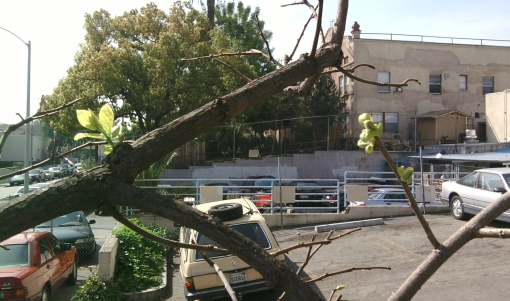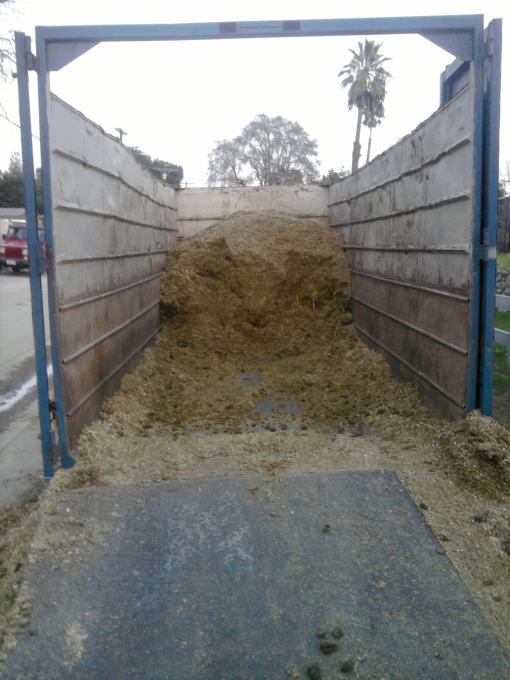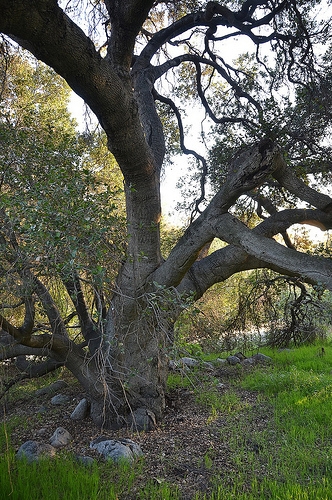
Three mulberries in my hand. The lower left one is whitish- not ripe at all. The upper left one is red - almost ripe, but not quite. The one on the right, nearly black with a little red, is about 98 percent ripe and very much ready to eat.

- Ms. Eum in front of the Bbong Namu
I was riding home today and ran into a Korean woman named Tae Sook Eum who was checking out my garden. I’d spoken with her a couple of times before. She attends the Mijoo Peace Church across the street, so now and then on a late Sunday afternoon, I come across her happily exploring the front yard garden. I enjoy running into folks in garden, which a front yard garden is condusive to (see my musings on this here and here.) When we run into each other, Ms. Eum and I converse a bit – though my Korean is more limited than her English.
Today she was standing underneath the mulberry tree. This tree is right outside my front door. Like me, it used to live across the street. It was initially planted on the east side of Bimini Place, just south of White House Place, next to the fourplex that L.A. Eco-Village recently acquired. During a street project in 2007 or 2008, the city decided to remove the tree; it was getting big and making it difficult for drivers to see the stop sign. Instead of just destroying the tree, LAEV worked with the city to relocate it. We trimmed a lot of tree branches, and about a dozen folks helped carry the tree across the street, where we re-planted it in a large hole we had dug. Despite how large that hole seemed, it was still too small – and we had to further trim some roots. The tree is really tough and has grown gangbusters in the front yard. Mulberry trees grow to be huge.
Tae Sook Eum spotted the ripening mulberries. She said she was happy to see trees that she was familiar with from her time spent in Korea. She was referring to the mulberry, persimmon, and jujube trees. She told me (and wrote out) the Korean names, respectively:
- Mulberry Tree: 뽕나무 ‘bbong namu’
- Persimmon Tree: 감나무 ‘gam namu’
- Jujube Tree: 대추 나무 ‘dae chu namu’
(Namu meaning tree – or plant – or maybe larger plant – which I vaguely remember from studying Korean briefly when I moved to L.A. I also remember ‘gam namu’ from talking with Mr. Lee when I used to live on White House Place. We planted a persimmon tree there, but it was later removed by the landlord, Mr. Lee’s brother.)
Mulberries, the fruit, start out fairly light – a sort of white-ish green. As they ripen the fruits redden then become nearly black: black with a hint of red. They’re not all that sweet until they get dark. I’ve heard (from a guy at the Papaya Tree Nursery) that there also are really wonderful Persian mulberries that are white when ripe… I am not sure of what specific type of mulberry is in the front yard here.
The fruit actually falls from the tree when fully ripe… but that’s somewhat uncommon for this tree. It’s more likely that the squirrels and birds will eat these berries before I get to them. They’re just ripe this week… so Ms. Eum shared a few ripe berries. I gave her an artichoke and explained how to cook it, and I rushed off to help teach a consensus workshop for new eco-villagers.










